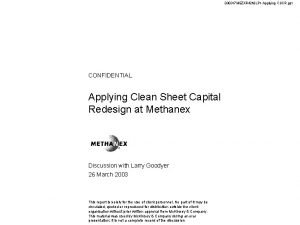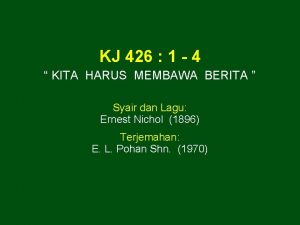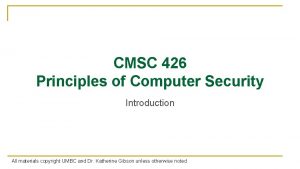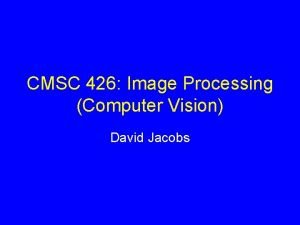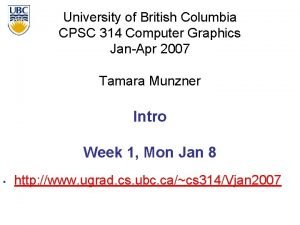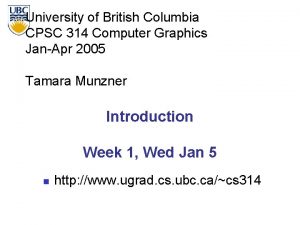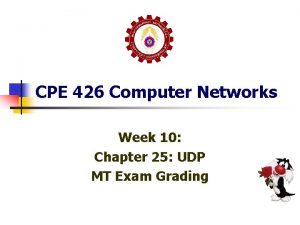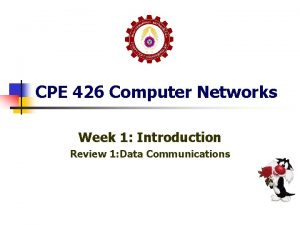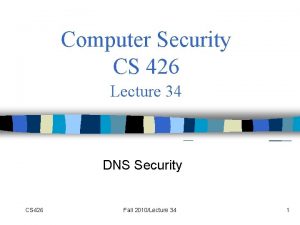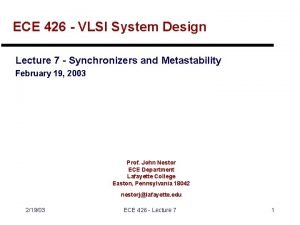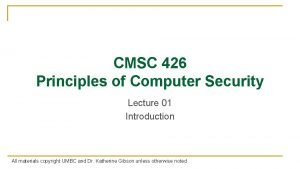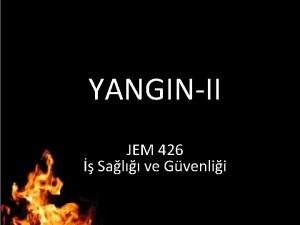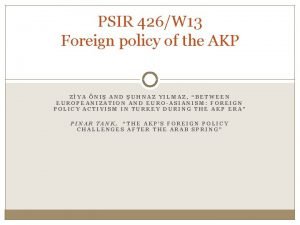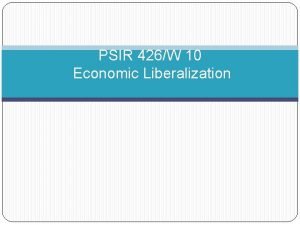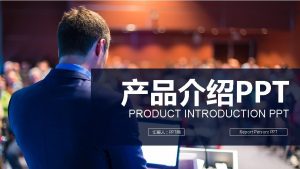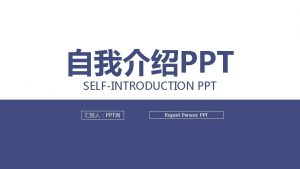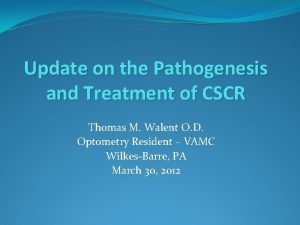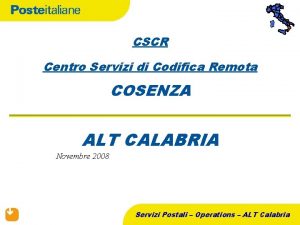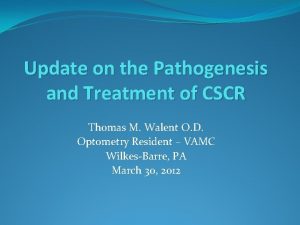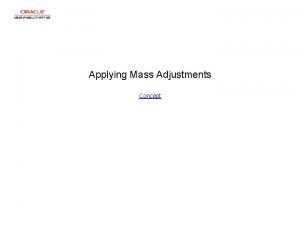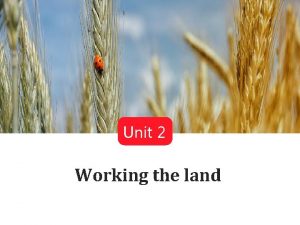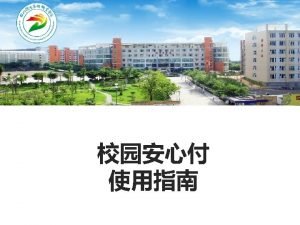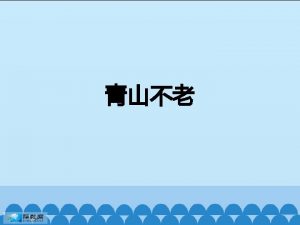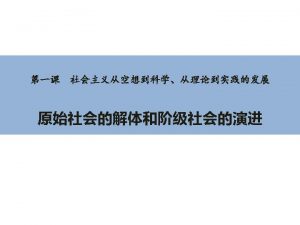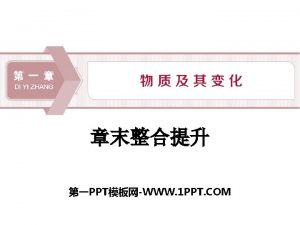030317 MEZXR 426 JLP 1 Applying CSCR ppt















- Slides: 15

030317 MEZXR 426 JLP 1 -Applying CSCR. ppt CONFIDENTIAL Applying Clean Sheet Capital Redesign at Methanex Discussion with Larry Goodyer 26 March 2003 This report is solely for the use of client personnel. No part of it may be circulated, quoted or reproduced for distribution outside the client organisation without prior written approval from Mc. Kinsey & Company. This material was used by Mc. Kinsey & Company during an oral presentation; it is not a complete record of the discussion

SUMMARY 030317 MEZXR 426 JLP 1 -Applying CSCR. ppt Based on what we read about Methanex’s proposed $2 billion Methanol facility on the Burrup Peninsula, we understand that despite significant effort and the promise of government commitments you are unable to make the project reach acceptable financial returns. We understand that you are worried in particular about capital spend, the IR risk on labour costs and exchange rate movements We believe that Mc. Kinsey & Company may be able to help. We have successfully used a process and tool called Clean Sheet Capital Redesign (CSCR) to help our clients achieve up to 30% reduction in capital costs on their major projects. The CSCR approach has been successfully applied to many large capital projects including both greenfield construction and expansion of mines and industrial facilities CSCR is a systematic process that significantly increases the value of major capital projects • Value is generated across three analytical phases (test and refinement of business case, overhaul of the process and engineering for value), with the majority of the value often in the first phase • Key roles are performed by Senior Management, CSCR project management and a multifunction team (including consulting support) • CSCR complements the existing planning process through validating key assumptions, providing direction, challenging the design process and feeding recommendations back into the project scoping and planning activity 1

030317 MEZXR 426 JLP 1 -Applying CSCR. ppt OVERVIEW OF CLEAN SHEET CAPITAL REDESIGN • A systematic process to link the engineering scope and design of a major capital project with the commercial strategy through three analytical phases What is CSCR? • Independent appraisal of project’s value and fact-based assessment of business What does it deliver? Who is involved and what are their roles? • • Senior Management and Board-interviewed to identify key value drivers and • • How does it fit into existing planning? case Systematic identification and quantification of risk Specific value improvement levers and actions to mitigate risks Recommendation: Go, no go, or fix it and here’s how project strategy and make commercial decisions Cross-functional team, suppliers and external experts-participate in brainstorming sessions to identify improvement opportunities Mc. Kinsey team manages the process, provides an independent viewpoint, challenges and stretches the thinking • CSCR complements the existing planning processes through validating key assumptions, providing direction, and challenging the design process 2

030317 MEZXR 426 JLP 1 -Applying CSCR. ppt EXAMPLES OF SUCCESSFUL APPLICATION OF CSCR Situation Approach Impact • Construction • Completed CSCR approach with client to develop • Reduction of capex of an iron ore mine and concentrator • Construction a leaner design • Reviewed and tested feasibility study of project, set up of a zinc mine and concentrator • Construction process to ensure the engineering design was lean, and reviewed the final engineering design • Reviewed and tested feasibility study of project of a greenfield alumina refinery • Expansion of a boron mine • Construction of an airport • NPV value increased from marginal to $300500 m with additional $250 m options • NPV value increased and worked closely with design teams during the process from $100 -200 m to $1 B design phase • Applied CSCR to new crusher project to rethink the real • Reduced capex by 20% • performance specifications needed Defined a capital plan for the principal mine • Tested the business case to improve the economics of a brewery • Expansion by $200 m • NPV value increased by $10– 20 m • Built a business case for an airport using CSCR to optimise investments, revenue and margins • Significant reduction of capex 3

030317 MEZXR 426 JLP 1 -Applying CSCR. ppt THREE PHASES OF CSCR Diagnostic and kick-off Phase 1: Test and refine the business case Go/No Go Phase 2: Overhaul the process Go/No Go Phase 3: Engineer for value Timing • 4– 6 weeks • 4– 8 weeks • 4– 6 weeks Key issues • How robust is the project value • What are the drivers/process • How can the cost levers given technical and market risks? • What is the expected outcome and distribution of likely outcomes? Resources • Senior Management and expert involvement (through interviews and workshops) • Cross functional team (2– 3) • Mc. Kinsey team (2– 3) steps for each project component? Final review value and manage risk? be improved to increase the expected value and minimise the risk of destroying shareholder value? • Small engineering team • Multiple idea sessions with client, • What are the options to improve supplemented by relevant functional experts (3– 6) • Further expert involvement suppliers and external experts • Multi-functional team (2– 3) • Mc. Kinsey team (2– 3) through workshops • Mc. Kinsey team (2– 3) Typical analysis and activities • Microeconomic analysis • Decision tree and sensitivity analysis for key value drivers • Evaluate technical/market risks • Determine project components and key drivers/process steps • Optimise options for each key driver/process step and calculate expected impact on NPV • Understand the drivers of cost (opex and capex) and revenue by project component, function and process step • Benchmark and determine technical limits • Facilitate multi-function idea sessions to reduce costs End products • Optimal strategy • Revised business scope • Value engineering improvements 4

030317 MEZXR 426 JLP 1 -Applying CSCR. ppt POTENTIAL IMPROVEMENT IMPACT OF CSCR PHASES NPV improvement potential (on initial cost base) Test and refine the business case Overhaul the process Engineer for value ~3% ~30% ~7% ~20% Match project scope with optimised business case Tighten the screws on unnecessary costs Devise a superior strategy Potential root cause of excessive original capex • Insufficient • Board/Senior Management involvement in setting project strategy and ‘characteristics’ Insufficient crossfunctional involvement in solution development Total potential improvement • Design based • • on assumptions of a poor strategy Poorly functioning project team Misaligned incentives/risk aversion • Poorly functioning • • project team ‘Gold-plating’ of design Misaligned incentives 5

030317 MEZXR 426 JLP 1 -Applying CSCR. ppt PHASE 1: TYPICAL KEY ISSUES AND ANALYSIS Key issues Typical analysis and activities End products What is the realistic project value? • Identify key value drivers through industry • Identification of key What are the key knowledge, Board and Senior value drivers? Management interviews • Conduct microeconomics analysis (supply/demand) • Determine impact of entry on price • Evaluate opportunities to capture value from competitors and customers • Understand economics of upstream/downstream integration How sensitive are they? What are the key risks? What is the expected outcome given these risks? What project characteristics are required to optimise the value of the project? • Prepare decision tree and sensitivity analysis • Sensitivity analysis (+/-10%) for key value drivers • Identify groups of risks (eg exchange rate, market, • Identified risks commercial, climatic, technical and construction) • Estimate likelihood of occurrence based on input • from design team, suppliers and external sources Evaluate technical and market risks and calculate expected impact on NPV • Calculate and optimise project characteristics (eg resource, reserve, product specifications, capacity, recovery, learning curve, life span, capex, opex, hedging, commissioning date and NPV) • Quantification of risk impact on project NPV • Revised project value • Go/no-go decision • ‘Set in stone’ project characteristics 6

030317 MEZXR 426 JLP 1 -Applying CSCR. ppt PHASE 1: TYPICAL END PRODUCTS GREENFIELD MINE AND PLANT CSCR ISSUE TREE KEY DRIVERS Volume Learning curve Start date Flexibility Production to market Optimise system linkages Maximise project value Ore and process to smelter Customer choice Pricing Greenfields Mining to processing Cut-off grade Selectivity Mine sequence Variability Thoughput time Processing Transport Infrastructure Benchmarking Minimise cost drivers Key project drivers • Each of the drivers of the system linkages is optimised individually during Phase 1 to determine the ‘project characteristics’ Project components • In Phase 2 options are identified for each of the major project components and then optimised • These techniques are used in Phase 3 to size the opportunity to reduce each cost driver • Idea brainstorming is used to work out how Mining Optimise project component options Physical limits PVA Outsourcing Purchasing ‘SET-IN-STONE’ PROJECT CHARACTERISTICS GREENFIELD MINE & PROCESSING PLANT RISK IMPACT ON PROJECT NPV Market price Sales volume NPV excluding risk Technical risk Commercial set-backs GO/NO GO DECISION Adverse climate Expected value of NPV including risk GO/NO GO DECISION FROM CSCR PROJECTS Project characteristics Value Industry Original strategy Strategy after Phase 1 completed • Resource • X mt, x% zinc, cut-off grade x% zinc equivalent • Beer manufacturing • • • Reserve • X mt, x% zinc, cut-off grade x% zinc equivalent Build additional capacity for brewery Use maintenance improvements to release latent capacity • Product specifications • X% zinc, y% silica • Mobile phone network • • • Production capacity • X kt zinc per year for y years, x kt per year after Build entirely separate network from competitors Do not build new network, share network of competitors • Recovery • X% • • 92 -97 -100 Build greenfield gold mine and processing plant • Learning curve Gold mining and processing • • Do not build mine due to negative NPV from decreasing metal price • Capex • $1 Billion • Opex • $200 million • Commissioning date • 1 st quarter 200 x • NPV • $x million 7

030317 MEZXR 426 JLP 1 -Applying CSCR. ppt PHASE 2: TYPICAL KEY ISSUES AND ANALYSIS Key issues What are the major project components and the impact on value? What options exist for each component? What impact does each option have on the value and risks? What are the process interdependencies? How can these be optimised? Typical analysis and activities End products • Identify project components • Identify drivers for each component or key • Project components linked • to economic value process steps Link drivers and process steps to economic impact • Identify options for each component driver/process step through experience, brainstorming and expert interviews • Potential options for each component driver/process step • Quantify impact of option on overall value and assess impact on risks • Quantified options • Identify and map process interdependencies • Map of process interdependencies • Review options to reconfigure the project • Optimised process design eg different mineral reserves; different telecom launch sequence 8

030317 MEZXR 426 JLP 1 -Applying CSCR. ppt PHASE 2: TYPICAL END PRODUCT GREENFIELD MINE AND PLANT PROJECT COMPONENTS AND VALUE OF QUANTIFIED OPTIONS PROJECT COMPONENTS Percentage of improvement value identified Mining Optimise project component options Processing Transport Infrastructure Base case value Example Subject to further study Example 53 • 24 Outsourcing peak waste removal ($28 m) 0 14 33 • Percentage of total infrastructure cost In-pit waste dumping ($20 m) Area roads • One way road? Dirt road? Diversion channel • Delay? Construction facilities 33 • • • Reducing 10 number of barges to one ($7 m) • Outsourcing peak waste removal ($28 m) • 45 Producing copper sulphate on site ($10 m) Trucking back the metal ($4 m) Area roads Reject 6 Accept subject to 15 study River diversion channel Accept 9 • Complete re-usage? • Less people on site? Tailored standard of living? • Electric power Engineering design Scheduled maintenance? • Correction for economies Local sharing? of scale? • Knock-on effect, capital savings? Other Total Percentage of total infrastructure savings Expected savings Re-usage? Site accommodation MANAGEMENT DECISION ON COMPONENT OPTIONS Decision • Construction camp Reducing number of people on site ($5 m) Item GREENFIELD MINE AND PLANT INFRASTRUCTURE COMPONENT OPTIONS COMPONENT KEY DRIVERS AND OPTION CHOICES GREENFIELD MINE AND PLANT PROGRESS REVIEW DECISIONS ON INFRASTRUCTURE OPTIONS Option rationale Concerns and risks One-way instead of two-way road: • Current width 8. 4 m • 2 -3 road trucks per day on 1 hour trip (70 km) • • • Risk of collision/accidents Dust problems Scheduling issues Dirt road instead of pavement • Other roads in area are dirt roads and used for same type of traffic (cattle trains) • No pavement needed if access for only 10 months • Road quality should align with other roads in area Just in time channel: • Currently channel is assumed to be needed in year 1 • Postponing channel until pit size requires it is possible for 7 years • None 9

030317 MEZXR 426 JLP 1 -Applying CSCR. ppt PHASE 3: TYPICAL KEY ISSUES AND ANALYSIS Key issues Typical analysis and activities End products What are the key drivers of cost (opex and capex) and revenue? • Understand the drivers of cost (opex and capex) • Opex, capex and revenue What is the opportunity for improvement for each driver? • Benchmark the way things get done and set How can the improvement potential be captured? • Facilitate brainstorming sessions with multi- and revenue by project component, function and process steps • • robust operation targets Determine technical limits to understand potential improvement functional teams, suppliers and experts Design fit-for-purpose components Remove unnecessary redundancies Trade-off operating vs capital expenses to maximise NPV driver trees • Size of improvement potential • Quantified improvement ideas 10

030317 MEZXR 426 JLP 1 -Applying CSCR. ppt PHASE 3: TYPICAL END PRODUCT IDENTIFICATION OF COST DRIVERS AND REDUCTION OPPORTUNITIES Item Unit Before After Mine Haul trucks Number @ tons 7 @ 240 5 -6 @ 190 Plant Surge capacity Primary crusher Crushing stages Product stockpiles Reclaiming system Total plant area Tonnes Tph Number Units x Ktonnes 75, 000 (stockpile) 4, 500 (60/89 gyratory) Three 2 x 100 BWR (7, 500 tph) 46, 000 900 (2 bins) 2, 600 (54/74 gyratory) Two 8 x 21 BWR (3 -5, 000 tph) 5, 000 Power supply ANFO storage Other buildings Kv Tonnes Type 220 800 (bunker) Separate (brick veneer) 66 240 (agri shed) Combined (brick veneer) 1 in 10 1: 3 300 1 in 25 1: 1. 5 200 Infra Rail Contour interval Batter slopes Ballast depth Square metres Metres V: H Millimetres Total hours Index Product output Index 100 Power Index 120 92 Mwh/tonne of product Index 100 Power availability Index 95 94 Operating utilisation Index 90 200 Total capital cost of facility $ Millions 200 4. 6 0. 3 Building cost $ ‘ 000/t storage capacity 5. 80 1. 25 Maximum potential based on theoretical limit 130 85 Starting point Benchmark Final result 800 0. 3 Before After 8760 REDUCED COST OF EXPLOSIVE STORE THROUGH REDUCING BOTH BENCHMARKING CAPACITY AND BUILDING COST Storage capacity Tonnes FURNACE CAPACITY INCREASE USING THEORETICAL LIMITS CALCULATION OF THEORETICAL LIMITS Available Mwh Index 115 100 BENCHMARKING TO UNDERSTAND IMPROVEMENT POTENTIAL GREENFIELD MINE AND PLANT Power-on time derived from fundamental analysis of electrode usage Impact of power reductions required to manage greater furnace instability QUANTIFIED IMPROVEMENT IDEAS Mostly To some extent x Hardly • • 3 + runway • • Reduce RESA zones NPV US$B 5 1. 25 CAPEX BRAINSTORMING SESSION IMPROVEMENT IDEAS FOR CONSTRUCTION OF AN AIRPORT Applicable New at current Highly ventures location? certain ? New Truly island concept? actionable? 0. 5 x x x Place terminals/office at 0 m NAP 0. 5 Do not fill areas between runways x Locate at depth of 15 m Construction/risk of sea walls Use ‘maaiveld’ instead of ‘open bak’ 1 x x 1 -1. 5 x Locate at Hook of Holland 0. 7 -1. 2 x Locate island at 5 km from shore Use dual modality bridge 0. 5 -1 x 0. 5 x Use ICT trains and tracks Reduce size and design of terminal p. m x x 0. 7 -1. 2 x x x Greenfield baggage system 0. 2 -0. 5 x x x Phase investments 1. 5 -2 x x Productivity increase 0. 2 -1 x x x 13 -16 8 -10 4 -5 12 -16 5. 5 -7 10 -11. 5 Total 11

030317 MEZXR 426 JLP 1 -Applying CSCR. ppt KEY ROLES DURING THE CSCR PROJECT Role: • Interviewed to determine key value drivers and project strategy • Set the project characteristics • Make go/no go decision • Make decisions on options Role: • Participate in idea brainstorming sessions • Provide expert knowledge Other resources (as required) • Suppliers • Engineering consultants Client organisation • Engineering • Marketing • Operations Board/Senior Management Role: • Manage process • Communicate and syndicate recommendations • Troubleshoot CSCR project management • Mc. Kinsey Manager • Client Manager Full-time team • Multi-function client team – 2 -3 for phase 1 and 3 – 3 -6 for phase 2 • Mc. Kinsey (1 -2) Role: • Perform analysis • Develop recommendations • Quantify impact and develop tracking process 12

030317 MEZXR 426 JLP 1 -Applying CSCR. ppt MCKINSEY CSCR PROPOSITION Robust methodology and tools Proven set of tools and methodology • Issue trees • Proprietary option valuation model • Brainstorming sessions • Benchmarking • Theoretical limits • Purchasing • Incentive design + Experts in CSCR and industry Expertise in major capital productivity improvement, project value analysis and improvement of capital processes in range of industries + Experience on many projects Experience on greenfield and expansion projects across a range of industries • Mining and minerals processing • Pulp and paper • Transportation = Impact of up to 30% NPV improvement (on initial cost base) 13

030317 MEZXR 426 JLP 1 -Applying CSCR. ppt THE WAY WE WORK WITH OUR CLIENTS • We only engage with our clients where we both agree there is substantial value at stake—in excess of 5– 10 times our fees • We engage with our clients on a per-month rate of professional fees plus out-of-pocket expenses and GST—prorated for part-month • Professional fees for a typical team is around A$500 k per month • We typically do not enter formal contractual arrangements—rather enabling both Mc. Kinsey and our clients to terminate activity at any time if value is not being created 14
